
A Midsummer Night's Dream is a comedy play written by William Shakespeare in about 1595 or 1596. The play is set in Athens, and consists of several subplots that revolve around the marriage of Theseus and Hippolyta. One subplot involves a conflict among four Athenian lovers. Another follows a group of six amateur actors rehearsing the play which they are to perform before the wedding. Both groups find themselves in a forest inhabited by fairies who manipulate the humans and are engaged in their own domestic intrigue. A Midsummer Night's Dream is one of Shakespeare's most popular and widely performed plays.

Oberon is a king of the fairies in medieval and Renaissance literature. He is best known as a character in William Shakespeare's play A Midsummer Night's Dream, in which he is King of the Fairies and spouse of Titania, Queen of the Fairies.
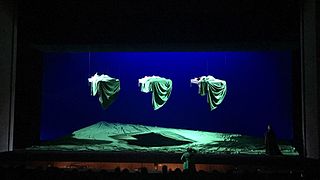
A Midsummer Night's Dream, Op. 64, is an opera with music by Benjamin Britten and set to a libretto adapted by the composer and Peter Pears from William Shakespeare's play, A Midsummer Night's Dream. It was premiered on 11 June 1960 at the Aldeburgh Festival, conducted by the composer and with set and costume designs by Carl Toms. Stylistically, the work is typical of Britten, with a highly individual sound-world – not strikingly dissonant or atonal, but replete with subtly atmospheric harmonies and tone painting. The role of Oberon was composed for the countertenor Alfred Deller. Atypically for Britten, the opera did not include a leading role for his partner Pears, who instead was given the comic drag role of Flute/Thisbe.
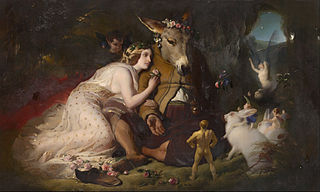
Nick Bottom is a character in Shakespeare's A Midsummer Night's Dream who provides comic relief throughout the play. A weaver by trade, he is famously known for getting his head transformed into that of a donkey by the elusive Puck. Bottom and Puck are the only two characters who converse with and progress the three central stories in the whole play. Puck is first introduced in the fairies' story and creates the drama of the lovers' story by messing up who loves whom, and places the donkey head on Bottom's in his story. Similarly, Bottom is performing in a play in his story intending it to be presented in the lovers' story, as well as interacting with Titania in the fairies' story.
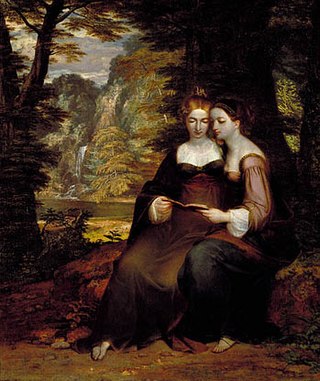
Helena is one of four young lovers – the others being Demetrius, Lysander, Hermia – featured in William Shakespeare's play A Midsummer Night's Dream.
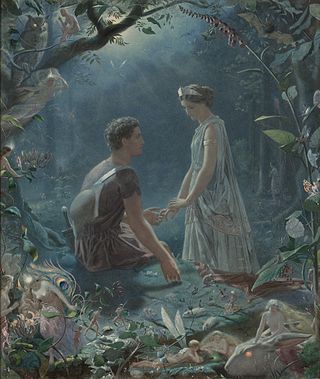
Lysander is a fictional character in William Shakespeare's play A Midsummer Night's Dream.
Egeus is a character in A Midsummer Night's Dream, the comedy by William Shakespeare. He is an Athenian who tries to keep his daughter, Hermia, from marrying Lysander. In original performances, the actor for his role probably played the part of Philostrate as well. Egeus wants Hermia to marry Demetrius.

Hermia is a fictional character from Shakespeare's play, A Midsummer Night's Dream. She is a girl of ancient Athens named for Hermes, the Greek god of trade.

A Midsummer Night's Dream is a 1968 British film of William Shakespeare's play A Midsummer Night's Dream, directed by Peter Hall.
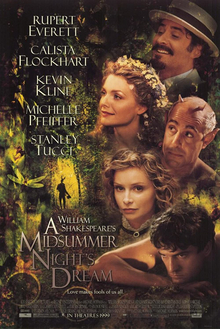
A Midsummer Night's Dream is a 1999 fantasy romantic comedy film written, produced, and directed by Michael Hoffman, based on the 1600 play of the same name by William Shakespeare. The ensemble cast features Kevin Kline as Bottom, Michelle Pfeiffer and Rupert Everett as Titania and Oberon, Stanley Tucci as Puck, and Calista Flockhart, Anna Friel, Christian Bale, and Dominic West as the four lovers.
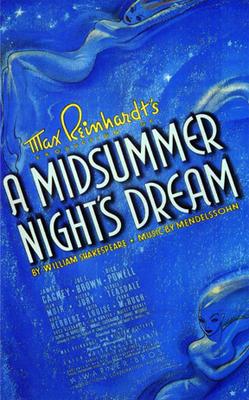
A Midsummer Night's Dream is a 1935 American romantic comedy fantasy film of William Shakespeare's play, directed by Max Reinhardt and William Dieterle, and starring James Cagney, Mickey Rooney, Olivia de Havilland, Jean Muir, Joe E. Brown, Dick Powell, Ross Alexander, Anita Louise, Victor Jory and Ian Hunter. Produced by Henry Blanke and Hal B. Wallis for Warner Brothers, and adapted by Charles Kenyon and Mary C. McCall Jr. from Reinhardt's Hollywood Bowl production of the previous year, the film is about the events surrounding the marriage of the Duke of Athens, Theseus, and the Queen of the Amazons, Hippolyta. These include the adventures of four young Athenian lovers and a group of six amateur actors, who are controlled and manipulated by the fairies who inhabit the forest in which most of the story is set. The play, which is categorized as a comedy, is one of Shakespeare's most popular works for the stage and is widely performed across the world. Felix Mendelssohn's music was extensively used, as re-orchestrated by Erich Wolfgang Korngold. The ballet sequences featuring the fairies were choreographed by Ballets Russes veteran Bronislava Nijinska.

A Midsummer Night's Dream is a 1909 American film directed by Charles Kent and J. Stuart Blackton, and starring Walter Ackerman and Charles Chapman. It was the first film adaptation of the eponymous play by William Shakespeare. The movie was made during summer 1909, but not released until December 25.

The 1970 Royal Shakespeare Company (RSC) production of A Midsummer Night's Dream was directed by Peter Brook, and is often known simply as Peter Brook'sDream. It opened in the Royal Shakespeare Theatre at Stratford-upon-Avon and then moved to the Aldwych Theatre in London's West End in 1971. It was taken on a world tour in 1972–1973. Brook's production of A Midsummer Night's Dream for the RSC is often described as one of the 20th century's most influential productions of Shakespeare, as it rejected many traditional ideas about the staging of classic drama.
The Dream is a one-act ballet adapted from Shakespeare's A Midsummer Night's Dream, with choreography by Frederick Ashton to music by Mendelssohn arranged by John Lanchbery. It was premiered by The Royal Ballet at the Royal Opera House, Covent Garden on 2 April 1964 in a triple bill with Kenneth MacMillan's Images of Love and Robert Helpmann's Hamlet.
Demetrius is one of the lovers in William Shakespeare's play A Midsummer Night's Dream. He is a young man who is engaged to a young woman, Hermia, who is in love with Lysander.
The Dreaming is a 2001 musical written by Howard Goodall and Charles Hart, based on William Shakespeare's A Midsummer Night's Dream but reset in the Edwardian period.

John Simmons (1823–1876) was a British miniature painter and illustrator, known primarily for his watercolours of ethereal fairyland scenes, often illustrating Shakespearian or other literary works. He was one of several popular Victorian artists who together created "a genre of forest idyll" in their fairy paintings. They are often grouped with the Pre-Raphaelites. Simmons lived in Bristol, and also painted portraits. He was elected to membership of the Bristol Academy of the Fine Arts in 1849. He died in November 1876 and is buried at Arnos Vale Cemetery.

The Quarrel of Oberon and Titania is an oil on canvas painting by the Scottish artist Sir Joseph Noel Paton. Painted in 1849, it depicts the scene from William Shakespeare's comedy play A Midsummer Night's Dream, when the fairy queen Titania and fairy king Oberon quarrel; Oberon was considered the King of the fairies in medieval and Renaissance literature. When exhibited in Edinburgh during 1850, it was declared as the "painting of the season". It was acquired by the National Gallery of Scotland in 1897, having initially been bought by the Royal Association for Promoting the Fine Arts in Scotland during 1850. An earlier version of this painting was Paton's diploma picture, which was submitted to the Royal Scottish Academy in 1846; they paid £700 for it.
Le Songe d'une nuit d'été is a French TV film from 1969. It is based on A Midsummer Night's Dream by William Shakespeare, and was directed by Jean-Christophe Averty.

A Midsummer Night's Dream is a 2016 British television film based on the William Shakespeare play A Midsummer Night's Dream. It was adapted by Russell T Davies, directed by David Kerr and produced by Nikki Wilson. It stars Maxine Peake as Titania, Matt Lucas as Bottom, John Hannah as Theseus and Nonso Anozie as Oberon. The film was first broadcast on 30 May 2016 on BBC One.













